News Clipping on 09-10-2018
 Date:09-10-18
Date:09-10-18
India first
We will prosper and perish together. Attacks on migrants in Gujarat are self-defeating
TOI Editorials
Attacks on migrant labourers from Uttar Pradesh and Bihar in Gujarat, triggering an exodus, reveal a worrying rise of parochial sentiments. It is a setback for the prevalent Gujarat narrative of attracting workers from poorer North Indian states. The miscreants were venting their ire on the workers for the September 28 rape of an infant, allegedly by a labourer from Bihar. By Sunday, police had arrested 342 men, mostly from the Thakor community, for nearly 40 attacks in Ahmedabad, Gandhinagar, Mehsana and Sabarkantha.
Tarring an entire migrant community for one man’s crime is old sport for nativist outfits. This played out in Maharashtra through the Shiv Sena from the 1960s, in Assam in the 1980s, and in Bengaluru in 2012 where north-easterners fled in panic after a sustained hate campaign on social media. Antagonism towards migrant workers over bogeys like stealing jobs from natives and worsening law and order may contradict the idea of India but populist politicians encourage parochialism.
Only two weeks ago, Gujarat chief minister Vijay Rupani promised to enact legislation that would guarantee 80% of industrial jobs to domiciled residents. Congress leader Alpesh Thakor, whose men have been arrested for some of the attacks, blamed the “agitation, anger and anguish” on locals losing jobs to migrants. With India lobbying world nations for free movement of labour and services, its states cannot be seen taking protectionist stances. GST enactment recognised the economic synergies that could be unleashed in a “single” market where all states followed single tax rates and dismantled checkposts.
It is the cosmopolitan, vibrant city states that grow and attract investment and talent, not the chauvinistic, insular ones. Gujaratis were among the first Indians to internalise globalisation and find opportunities in distant lands. Attacks on migrants diminish the reputation of the enterprising Gujarati. Government data shows that locals occupy 92% of private sector industrial jobs. But if the present heartburn is over low-paying unskilled jobs, then the state should be worried. It suggests that joblessness is rising and becoming a political flashpoint. Migrant workers have the same rights under the Constitution as everyone else and contribute immensely to local economies. Though law and order failures affect everyone, recent incidents like lynchings reveal their special vulnerability. Gujarat must prosecute and punish all those behind the violence on migrant workers.
![]() Date:09-10-18
Date:09-10-18
A Nobel Prize Boost for Climate Action
ET Editorials
The Nobel Prize for Economics has gone to two American economists, William D Nordhaus, who studies the interaction among nature, technology and the economy over time, and Paul M Romer, who endogenised technology into the growth model popularised by Robert Solow, in which technology functioned as an autonomous, external factor. Nordhaus is best known outside the arcane universe of professional economists for his work on climate change, producing computable models that permit forecasting how different kinds of growth will produce different kinds of change to the climate that will redound on the economy with differential impact. These models also permit calibration of policies to produce the desired-for effects on greenhouse gas production.
Paul Romer’s work helps produce a clearheaded technology policy. Technology does away with the constraint of diminishing returns to capital and labour. While capital and labour are ‘rival goods’, in the sense that their use in the generation of value at one place precludes their use for generation of value elsewhere, while ideas are ‘non-rival goods’, the same idea can produce value at multiple locations, unless restrictions are put on their access. Production of technology cannot be left to untrammelled market forces, for that would under-supply technology. Incentives have to be provided for technology generation: grant of temporary monopoly by way of patents for technology that can be commercialised, state funding of research in universities, to produce ideas of general validity, say, the theory of relativity.
The Economics Nobel trashes the simple-minded notion that the market knows best, by honouring economists who recommend state intervention to regulate positive and negative externalities. The Prize also refutes climate-change denial.
Date:09-10-18
Arise, Awake and Stop Climate Change
ET Editorials
The report on global warming at 1.5o C by the UN-backed science body, the Intergovernmental Panel on Climate Change (IPCC), sends out a clear message: the time for incrementalism is over, the world needs immediate, aggressive action to limit warming to 1.5o C. Earth is already 1oC warmer than in pre-industrial times. Capping warming at 1.5oC will require rapid, far-reaching and unprecedented measures over the next decade. The benefits far outweigh the cost and effort required.
Climate action is closely linked to sustainable development, which balances social well-being, economic prosperity and environmental protection. It spans multi-level governance, institutional capacity, policy instruments, technological innovation, transfer and mobilisation of finance and changes in human behaviour and lifestyles.
The IPCC special report makes it clear that while there are trade-offs between aggressive climate action and developmental goals, there are synergies as well. For India, the report should be a clarion call to action. Almost 70% of the country’s infrastructure is yet to be built, it is urbanising at a rapid pace, manufacturing is relatively nascent — all of this provides India the opportunity to transition to a low-carbon and sustainable development pathway. Land, urban infrastructure — including transport and buildings — and industrial systems must meld into a holistic plan of energy efficiency, and even offer low-hanging fruit. Finance and technology are key enablers but not the only prerequisites.
Countries such as India will experience a higher burden if the warming exceeds 1.5o C. The heatwaves, droughts and floods of the past year attest to this. Such calamities arising from extreme weather changes will set back any gains in bridging developmental deficits. Given the vulnerability of India’s population, aggressive action is an imperative, not an option. It is also an opportunity for India to show leadership and pave the way for truly cooperative and collaborative global action to tackle the biggest challenge confronting humanity.
![]() Date:09-10-18
Date:09-10-18
गांधी के विचारों में विकास का वैकल्पिक मॉडल
सुनीता नारायण
महात्मा गांधी की 150वीं जयंती पर साल भर चलने वाले समारोह की इस महीने शुरुआत हो गई है। ऐसे में यह आत्मचिंतन का वक्त है। इस अवसर पर मैं आपका ‘गांधी टेस्ट’ भी करूंगी। गांधी के सबसे उल्लेखनीय आदर्श अहिंसा के संदर्भ में निश्चित तौर पर दुनिया का पतन हुआ है। आज हमें जिंदगी के हरेक क्षेत्र में आक्रामकता नजर आती है। हमारे शब्दों से लेकर हमारे सामाजिक व्यवहार और प्रकृति के साथ हमारे रिश्ते तक में यह आक्रामकता हावी है। हमारी असहिष्णुता एकदम निचले धरातल पर जा चुकी है। इस पैमाने पर हम शून्य से भी कम अंक हासिल करते हैं।
फिर विकास का मुद्दा आता है। गांधी केवल अंग्रेजों को भारत से बाहर ही नहीं करना चाहते थे, वह आने वाले दौर को भी लेकर सोचते थे। उन्होंने इसके बारे में सोचा, लिखा और आगे चलकर अंजाम दिए जाने वाले कार्यों को लेकर अलग राय भी बनाई। गांधी के विचार कार्ल माक्र्स और एडम स्मिथ की विचारधाराओं का विकल्प पेश करते हैं। इस मामले में भी शून्य के करीब ही पहुंच पाए हैं। आज के समय में गांधी का वजूद प्राथमिक तौर पर उनके विचारों की ही वजह से है, इसलिए नहीं कि हमने उन विचारों को व्यवहार में अपनाया है। यह एक तथ्य है कि गांधी की मौत इसीलिए हुई थी कि उनके अनुयायियों ने अपनी हरकतों से उनकी हत्या कर दी। गांधी के अनुयायी आश्रमों में रहने को तरजीह दी जिससे उनके विचार सीमित जगह में ही कैद होकर रह गए। इन अनुयायियों का बाकी दुनिया से अलगाव हो गया। उन्होंने गांधी को रेट्रो बना दिया जबकि खुद गांधी आश्रम में रहने और तमाम प्रतीकात्मकता के बावजूद दुनिया से बखूबी जुड़े रहते थे। ये तो हम लोग हैं जिन्होंने गांधी को एक संकीर्ण सैद्धांतिक प्रतीक बनाकर रख दिया है। वह अपने दौर की राजनीति के लिए जिंदा रहे और उन्होंने खुद को अडिग रखते हुए करोड़ों लोगों को चलायमान बनाया था।
आज गांधी के बारे में सर्वाधिक चर्चित चीज खादी है जो एक बार फिर से फैशन में है। लेकिन हम यह नहीं जानते और न ही हमें यह बताया गया है कि गांधी ने खादी को इतनी अहमियत क्यों दी थी? उन्होंने खादी का इस्तेमाल स्वतंत्रता के एक साधन के तौर पर किया- केवल ब्रिटिश दासता से नहीं बल्कि औद्योगीकरण से भी आजादी। उस समय भी औद्योगीकरण ही चलन में था और आज भी यही है। उनके लिए खादी रोजगार का भी जरिया था लेकिन यह जनसमूह के लिए नहीं बल्कि जनसमूह के द्वारा रोजगार था। गांधी के लिए खादी कपास के खास बीज से जुड़ा मामला था जिसकी बुनाई के काम से बड़ी संख्या में लोग जुड़ सकते थे। अंग्रेज भारत में कपास की जो किस्म लेकर आए थे उसकी बुनाई लेकर लंकाशर की मिलों में ही हो सकती थी। इस लिहाज से खादी का इस्तेमाल स्थानीय स्तर पर रोजगार सृजन से भी जुड़ा हुआ था क्योंकि इससे बड़ी संख्या में लोग जुड़ सकते थे। यह भूमंडलीकरण नहीं बल्कि स्थानीयकरण से संबंधित था।
गांधी ने कपास की जिस किस्म को खादी के लिए चुना था वह स्वदेशी बीज था। इसकी खेती के लिए कम पानी की जरूरत थी और उसमें कीड़े भी कम लगते थे। यह देश के पर्यावरण के लिए बेहद मुफीद रहा होता। किसानों को कपास की खेती की बढ़ती लागत और फसल खराब होने का जोखिम बढऩे से आत्महत्या भी नहीं करनी पड़ती। लेकिन ऐसा तभी हो पाता जब हम गांधी के इस मॉडल के हिसाब से चले होते। गांधी की प्रासंगिकता की यही वजह है। पूंजीवाद और सांप्रदायिकता दोनों ही बेरोजगारी और पर्यावरण संबंधी खतरों का जवाब तलाशने में नाकाम रहे हैं। एडम स्मिथ के विचारों से प्रेरित दुनिया अधिक ऑटोमेशन की तरफ बढ़ रही है। पूंजीवादी मान्यता है कि उत्पादकता बढऩे से अवसर और कौशल में भी बढ़ोतरी होगी। वहीं माक्र्स की दुनिया औपचारिक उद्योग और श्रमिक संगठनों से आगे बढ़ पाने में दिक्कत महसूस कर रही है। वे इस बात को नहीं समझ सकते हैं कि रोजगार की दुनिया व्यक्तिगत उद्यमियों के हाथों में ही सिमटी हुई है। माक्र्सवादी विकास मॉडल अपने वैचारिक प्रतिद्वंद्वियों के मॉडल से अधिक अलग नहीं है।
जब मामला पर्यावरण से जुड़ा हो तो मैं इस बारे में पुख्ता तौर पर कह सकती हूं। मेरा मानना है कि दोनों ही विकास मॉडल जलवायु परिवर्तन के मामले में दुनिया को त्रासद प्रलय की तरफ ले जाएंगे। गांधी अब भी अप्रचलित नहीं हुए हैं, बस हमें ही नहीं पता कि उनके विचारों का अनुसरण कैसे करना है? हमारे पास ऐसे नेता नहीं हैं जो उनके विचारों को आत्मसात करते हुए मौजूदा वक्त के हिसाब से ढाल सके। मेरे हिसाब से गांधी के बारे में सबसे अहम चीज यह थी कि वह अपने विचारों को मुकाम तक पहुंचाने के लिए प्रयास करने की सामथ्र्य रखते थे। लेकिन इस पूरी प्रक्रिया में गांधी अहिंसा, न्याय और समानता के अपने सिद्धांतों पर हमेशा अडिग रहते थे।
आखिर में, गांधी टेस्ट में हम केवल लोकतंत्र के मोर्चे पर ही शून्य से कुछ ऊपर अंक हासिल करने में सफल होने का दावा कर सकते हैं। लेकिन हम लोकतंत्र की जड़ें गहरी करने के लिए उनके विचारों को ग्राम्य गणतंत्र के मुकाम तक नहीं ले जा सके हैं। हम इस मामले में नाकाम रहे हैं। इसके बजाय हमने प्रतिनिधिक लोकतंत्र को सशक्त करने का फैसला किया है जबकि गांधी सहभागी लोकतंत्र में यकीन करते थे। लेकिन हमारी निजता पर नए दौर के अतिक्रमण और पुरानी सोच वाले लोगों से मिल रही धमकियों के बावजूद लोकतंत्र जिंदा बना हुआ है। लेकिन इतना ही काफी नहीं है। महात्मा गांधी की जयंती का अगले साल 150 वर्ष पूरा होने जा रहा है। यह वक्त गांधी के बारे में सोचने का है।
 Date:09-10-18
Date:09-10-18
गुजरात में दरिंदगी के बाद नफरत की आग से उठीं लपटें
संपादकीय
गुजरात के साबरकांठा जिले में बिहार के मजदूर ने 14 माह की बच्ची के साथ जो कुछ किया वह एक व्यक्ति की दरिंदगी है। उसकी उसे कड़ी से कड़ी सजा मिलनी चाहिए लेकिन, उसकी सजा समूचे उत्तर प्रदेश और बिहार के प्रवासी मजदूरों को देना एक तरह की संकीर्णता और नफरत है। राज्य के साबरकांठा, वडोदरा, गांधीनगर, अहमदाबाद, पाटन और महेसाणा जिलों से बिहार और यूपी के मजदूरों को डराने, धमकाने और मारने, भगाने का जो अभियान चल रहा है वह एक भीड़ तंत्र का न्याय है। यह इस देश में पहले भी था लेकिन, पिछले दिनों उसने एक प्रकार की वैधता हासिल की है। संयोग से इस आक्रामक अभियान में क्षत्रिय ठाकोर सेना के लोगों के शामिल होने और उस सेना के अध्यक्ष व विधायक अल्पेश ठाकोर के कांग्रेस से जुड़े होने के कारण भाजपा और कांग्रेस के बीच आरोप-प्रत्यारोप का दौर शुरू हो गया है। बिहार से गुजरात तक नए किस्म की पार्टीबंदी शुरू हो गई है। अच्छी बात है कि दोनों राज्यों के मुख्यमंत्रियों ने स्थिति को संभालने का प्रयास किया है और हमलावर भीड़ के लोगों की गिरफ्तारी भी हुई है फिर भी यह स्थिति शर्मनाक है। यह स्थिति जहां बिहार के लोगों की बेचारगी को प्रकट करती है वहीं गुजरात के लोगों के दिलों में पनप रही नफरत पर भी टिप्पणी करती है।
नीतीश कुमार अब गुजरात बनाम बिहार मॉडल की बहस तो छोड़ चुके हैं और उनकी बहस को उठाने वाले नोबेल अर्थशास्त्री अमर्त्य सेन भी खामोश हैं। इसके बावजूद देश के एक राज्य को आगे बढ़ाने और दूसरे को पीछे रखने का खामियाजा इस देश के संविधान और लोकतंत्र को भुगतना ही पड़ेगा। गुजरात के लोग कह रहे हैं कि वहां के कारखानों में स्थानीय लोगों को रोजगार मिलना चाहिए न कि बाहर के लोगों को। उनका कहना है कि गुस्सा तो पहले से ही था लेकिन, साबरकांठा की घटना के बाद वह फूट पड़ा। इस देश के आधे-अधूरे उद्योगीकरण की यह बड़ी विडंबना है कि उत्तर प्रदेश और बिहार जैसे बड़े और पिछड़े राज्य मजदूर सप्लाई करने की नर्सरी बन कर रह गए हैं। उद्योगीकरण के इसी ढांचे पर सवाल उठाते हुए कभी महात्मा गांधी ने हर गांव को आत्मनिर्भर बनाने की बात की थी। गुजरात में पनप रही नफरत और संकीर्णता तो बुरी है ही लेकिन, उत्तर प्रदेश और बिहार की गरीबी भी श्लाघनीय नहीं है। विकास के इस असंतुलन को दूर किए बिना इस तरह की स्थिति उपस्थिति होती रहेगी।
![]() Date:09-10-18
Date:09-10-18
ओपेक सरीखा दमदार हो सौर संगठन
इसमें संदेह नहीं कि भविष्य सौर ऊर्जा का है और इसीलिए सोलर एलायंस को ओपेक के समक्ष खड़ा करने की बात कही जा रही है।
डॉ. भरत झुनझुनवाला , (लेखक वरिष्ठ अर्थशास्त्री व आईआईएम, बेंगलुरु के पूर्व प्राध्यापक हैं)

हाल ही में दिल्ली में इंटरनेशनल सोलर एलायंस यानी आईएसए का पहला सम्मेलन आयोजित हुआ। आईएसए की स्थापना वर्ष 2015 में प्रधानमंत्री नरेंद्र मोदी और फ्रांस के राष्ट्रपति इमैनुएल मैक्रों द्वारा की गई थी। प्रधानमंत्री नरेंद्र मोदी ने कहा कि यह अंतरराष्ट्रीय सौर गठबंधन आने वाले समय में तेल निर्यातक देशों के संगठन ओपेक की बराबरी कर सकता है। ओपेक उन तेल उत्पादक देशों का संगठन है, जो दुनिया के 40 प्रतिशत तेल का उत्पादन करते हैं। इसी संगठन के माध्यम से वे अंतरराष्ट्रीय बाजार में तेल की कीमतों को प्रभावित करते हैं। इस तरह अंतरराष्ट्रीय बाजार में तेल के दाम ओपेक द्वारा नियंत्रित किए जाते हैं। सम्मेलन के दौरान मोदी ने कहा कि भविष्य में आईएसए भी सौर ऊर्जा के दाम का नियंत्रण कर सकता है।
सौर ऊर्जा के महत्व को पहचानने और उस पर जोर देने के लिए मोदी बधाई के पात्र हैं, लेकिन विश्व स्तर पर सौर ऊर्जा को बढ़ावा देने के लिए कुछ बिंदुओं पर विशेष रूप से ध्यान देना जरूरी है। इसमें पहला तो यही है कि तेल और सौर ऊर्जा के चरित्र में मौलिक अंतर है। कच्चे तेल को एक स्थान से निकालकर दूसरे स्थान तक आसानी से ले जाया जा सकता है, जैसे टैंकरों द्वारा ईरान से तेल भारत को पहुंचाया जा रहा है। इसके उलट बिजली की ढुलाई के लिए टांसमिशन लाइनों का जाल बिछाना होता है। इसके लिए अपने देश में नेशनल ग्रिड है। इसके माध्यम से देश के किसी भी हिस्से में उत्पादित बिजली को किसी दूसरे स्थान पर पहुंचाया जाता है। इसी प्रकार एक अंतरराष्ट्रीय ट्रांसमिशन ग्रिड बनाना होगा। उन देशों में जहां सूर्य की रोशनी अधिक उपलब्ध है, वहां पर उत्पादित बिजली को योरप और उत्तरी अमेरिका के उन स्थानों पर पहुंचाया जा सकता है, जहां पर सूर्य की रोशनी कम पड़ती है। जिस प्रकार परमाणु अस्त्रों के संबंध में परमाणु अप्रसार संधि की गई है, उसी प्रकार सौर ऊर्जा की साझेदारी के लिए अंतरराष्ट्रीय ट्रांसमिशन लाइन की संधि करना जरूरी है, जिससे सौर ऊर्जा को एक स्थान से दूसरे स्थान पर पहुंचाया जा सके। इस ग्रिड का रूप चीन द्वारा स्थापित बेल्ट रोड इनिशिएटिव की तर्ज पर तय किया जा सकता है। इसमें भारत अग्रणी भूमिका निभाकर पूरी दुनिया में सौर ऊर्जा के वितरण को सरल बना सकता है।
तेल और सौर ऊर्जा में दूसरा मौलिक अंतर भंडारण का है। तेल को एक स्थान पर जमीन से निकालकर बड़ी टंकियों में भंडारण किया जा सकता है और जरूरत के अनुसार उससे निकालकर उपयोग किया जा सकता है। सौर ऊर्जा का चरित्र बिल्कुल भिन्न् है। इसका उत्पादन दिन के उस समय होता है, जिस वक्त सूर्य की रोशनी चमकती है, लेकिन ऊर्जा की खपत सुबह, शाम और रात को अधिक होती है। यानी जब ऊर्जा की ज्यादा जरूरत नहीं होती, तब सौर ऊर्जा अधिक उत्पादित होती है और जब उसकी अधिक जरूरत पड़ती है तो उसका उत्पादन सुस्त पड़ जाता है। उत्तरी देशों में सर्दियों में घरों को गर्म रखने के लिए ऊर्जा की खपत ज्यादा होती है, जबकि सूर्य की रोशनी गर्मी के समय ज्यादा प्रखर होती है। सौर ऊर्जा को प्रभावी बनाने के लिए जरूरी है कि सौर ऊर्जा का भंडारण किया जा सके। वर्तमान में सौर ऊर्जा जिस समय उत्पादित होती है, उसी समय उसका उपयोग अनिवार्य है।
आज सौर ऊर्जा के भंडारण के कई उपाय उपलब्ध हैं। एक उपाय यह है कि सौर ऊर्जा से तेल को ऊंचे तापमान तक गर्म कर लिया जाए। इसके बाद जब बिजली बनाने की जरूरत हो तो इस गरम तेल को बायलरों में डालकर उससे भाप बनाई जाए और उससे टरबाइन चलाकर बिजली बनाई जाए। दूसरे उपाय के तहत बैटरियों में बिजली का भंडारण किया जा सकता है। तीसरे उपाय के तौर पर पंप स्टोरेज योजनाओं से भंडारण हो सकता है। इन योजनाओं में दो तालाब ऊंचे और निचले स्तर पर बनाए जाते हैं। दिन के समय जब सौर ऊर्जा उपलब्ध होती है, तब नीचे के तालाब से पानी को पंप करके ऊपर के तालाब में भर लिया जाता है। इसके बाद सुबह-शाम जब बिजली की जरूरत होती है, तो ऊपर के तालाब से पानी को नीचे के तालाब में टरबाइन के माध्यम से ले जाकर बिजली बना ली जाती है। हालांकि ये तकनीक आज उपलब्ध तो हैं, लेकिन फिलहाल इन पर खर्च काफी ज्यादा आता है। ऐसे में सौर ऊर्जा को कारगर बनाने के लिए इसके भंडारण के नए आयाम को ढूंढना बहुत जरूरी है।
पिछले कुछ समय के दौरान सौर ऊर्जा की दरों में भारी गिरावट आई है। एक दशक पहले तक सौर ऊर्जा की दर 16 रुपए प्रति यूनिट तक पड़ती थी जो अब घटकर 4 रुपए प्रति यूनिट तक आ गई है। इसकी तुलना में आज तापीय बिजली का औसत दाम 3.25 रुपए प्रति यूनिट है। चूंकि सौर ऊर्जा का दाम अभी भी तापीय बिजली से कुछ अधिक है, तो राज्यों के बिजली बोर्ड अमूमन सौर ऊर्जा खरीदने से कतराते हैं। इस लिहाज से उन्हें तापीय बिजली ज्यादा रास आती है। ऐसे में जरूरी है कि हम सौर ऊर्जा की दरों में गिरावट लाने के लिए कदम उठाएं। सौर ऊर्जा के दाम में सोलर पैनल की विशेष भूमिका होती है। सोलर पैनल की कीमतें भी समय के साथ कम होती गई हैं, लेकिन इनकी कीमतों में कटौती के लिए अभी और अनुसंधान किए जाने की जरूरत है, ताकि सौर ऊर्जा का दाम और कम हो जाए और राज्यों के बिजली बोर्ड के लिए इसे खरीदना घाटे का सौदा न रहे।
आईएसए को वैश्विक स्तर पर कारगर बनाने के लिए जरूरी है कि सदस्य देशों को सौर ऊर्जा के विकास के लिए वित्तीय मदद उपलब्ध कराई जाए। वर्तमान में एलायंस की सोच है कि एशियाई विकास बैंक, अफ्रीकन विकास बैंक और न्यू डेवलपमेंट बैंक जैसी स्थापित बहुराष्ट्रीय वित्तीय संस्थाओं के जरिए सदस्य देशों को सौर ऊर्जा के विकास के लिए ऋण उपलब्ध कराए जाएं। इस रणनीति की सफलता में संदेह है, क्योंकि इन बहुराष्ट्रीय बैंकों की प्राथमिकताएं अलग हैं। इनके लिए सौर ऊर्जा पर ध्यान देना उतना जरूरी नहीं है, जितना गरीबी उन्मूलन, स्वास्थ्य अथवा शिक्षा। इसलिए इनके माध्यम से पर्याप्त मात्रा में सौर ऊर्जा के लिए वित्तीय सहायता की उपलब्धता संदिग्ध रहती है। हमें प्रयास करना चाहिए कि ‘विश्व सौर विकास बैंक नाम के एक नए बहुराष्ट्रीय बैंक की स्थापना के लिए कदम उठाए जाएं। कई विकसित देश सौर ऊर्जा को बढ़ावा देने के उत्सुक हैं जैसे फ्रांस के राष्ट्रपति ने इसमें बढ़-चढ़कर हिस्सा लिया है। इन विकसित देशों की सहायता से इस बैंक को पूंजी उपलब्ध कराई जा सकती है और इस पूंजी को सदस्य देशों को उपलब्ध कराया जा सकता है। इसमें संदेह नहीं कि भविष्य सौर ऊर्जा का है, लेकिन सोलर एलायंस को ओपेक के समक्ष खड़ा करने के लिए उपरोक्त बिंदुओं पर ध्यान देने की जरूरत है। तभी सोलर एलायंस को सफलता हासिल हो सकेगी।
![]() Date:08-10-18
Date:08-10-18
समता का सम्मान
संपादकीय
इस बार शांति का नोबेल पुरस्कार यौन उत्पीड़न के खिलाफ अभियान चलाने वाले दो महानायकों कांगो के स्त्री रोग चिकित्सक डेनिस मुकवेगे और इराकी मूल की युवती नादिया मुराद को दिया गया है। डॉ. मुकवेगे पिछले दो दशक से भी ज्यादा समय से यौन उत्पीड़न की शिकार महिलाओं का इलाज करते हैं और दुनिया भर में इस बुराई के खिलाफ लोगों को जागरूक बनाने के लिए अभियान चला रहे हैं। नादिया मुराद ने अपने छोटे से जीवन में यौन दासी बनने जैसी पीड़ा भोगी, लेकिन इसी पीड़ा को उन्होंने दुनिया भर में महिलाओं के साथ होने वाले इस अमानवीय अपराध के खिलाफ खड़े होने की ताकत में बदल डाला। आज नादिया एक संगठन चला कर यौन दासता के खिलाफ काम कर रही हैं। नोबेल पुरस्कार चयन समिति का यह फैसला जहां पूरी दुनिया के समाजों और सरकारों के लिए बड़ा सदेश है, वहीं इस मार को झेल रही आबादी के लिए उम्मीद की एक किरण भी पैदा करता है।
पूरी दुनिया में घरों से लेकर कार्यस्थलों तक और संघर्षों तथा गृहयुद्ध की मार झेल रहे देशों में यौन उत्पीड़न को एक हथियार के रूप में इस्तेमाल किया जा रहा है। दुनिया के संकटग्रस्त हिस्सों में न सिर्फ महिलाओं, बल्कि अबोध बच्चियों तक को यौन हिंसा का शिकार होना पड़ रहा है। संयुक्त राष्ट्र शांति सैनिकों पर यौन उत्पीड़न के आरोप लगते रहे हैं। वर्ष 2012 में जब डॉ. मुकवेगे को यौन हिंसा पर संयुक्त राष्ट्र में बोलने के लिए आमंत्रित किया गया था तो उन्होंने इस जघन्य अपराध के लिए जिम्मेदार लोगों की कड़ी आलोचना की थी। इस वजह से उन पर उनके ही देश कांगो में कई बार हमले भी हुए। लेकिन वे लगातार यौन उत्पीड़न की शिकार महिलाओं के लिए काम करते रहे। इसीलिए आज कांगों ही नहीं, दूसरे अफ्रीकी देशों में भी महिलाएं उनमें ईश्वर का रूप में देखती हैं। नादिया मुराद ने भी गजब की हिम्मत दिखाई। यौन उत्पीड़न के खिलाफ लड़ाई का जो जज्बा इस युवती में दिखा, वह दुनिया की करोड़ों महिलाओं को ऐसे जुल्म के खिलाफ खड़े होने की ताकत देता है।
यौन उत्पीड़न सदियों से गंभीर समस्या बनी हुई है। इक्कीसवीं सदी में जब इन्सान बहुत ज्ञानी और सभ्य होने का दावा कर रहा है, तब भी आधी आबादी को इस समस्या से निजात नहीं मिली है। अब यौन उत्पीड़न के मामले जिस तेजी से सामने से आ रहे हैं, उससे इस समस्या की विकरालता का पता चलता है। विकसित, विकासशील और तीसरी दुनिया के देशों में सब जगह यौन उत्पीड़न सरकार और समाज के लिए गंभीर चुनौती के रूप में खड़ा है। दुनिया भर में महिलाओं को कभी न कभी और किस तरह यौन उत्पीड़न का शिकार होना पड़ा है, यह मीटू अभियान से पता चलता है। तमाम बड़ी हस्तियों ने साहस जुटाते हुए इस बात का खुलासा किया कि उनको भी इस दर्दनाक यातना से गुजरना पड़ा। तमाम देश यौन उत्पीड़न की घटनाओं से निपटने के लिए कानूनी तरीकों से लेकर दूसरे तरीके अपना रहे हैं, पर इसके सकारात्मक नतीजे सामने नहीं आ रहे। यही गंभीर चिंता का विषय है। अगर दुनिया को सही मायनों में समृद्ध बनाना है तो सबसे पहले महिलाओं को सशक्त बनाना होगा। इसके लिए जरूरी है उन्हें यौन उत्पीड़न जैसी यातना से मुक्ति दिलाना। इसके लिए महिलाओं के प्रति नजरिया और सोच बदलना होगा। डॉ. मुकवेगे और नादिया मुराद ने इसी का रास्ता दिखाया है।
 Date:08-10-18
Date:08-10-18
No Time To Waste
For Delhi, modernising the Russia partnership, to redefine its form and content in a changing world, is crucial
Editorial
Cut through the hype about the Russian President Vladimir Putin’s day-long visit to Delhi and you will find the enduring essence of the bilateral relationship — inertia. Looking at concrete outcomes, there is not much that is notable beyond the traditional basket of arms sales, civil nuclear cooperation and hydrocarbons. Successive governments in Delhi have revelled in framing the partnership with Russia in grandiose rhetoric — of strategic autonomy and the quest for a multipolar world. But they have done nothing to modernise the partnership in a changing world.
As it quarrels with America, Europe and Japan, Moscow has drawn ever closer to Beijing. If China’s rising power provides the biggest challenge to India, how can Moscow, in a tightening embrace with Beijing, strengthen India’s “strategic autonomy”? The bonhomie with Beijing has also led Moscow to cosy up to Pakistan. Even more important, Russia’s relative weight among the major powers has gone down significantly. Its current GDP at $1.6 trillion is a little more than half of India’s ($2.8 trillion). Comparison with major powers makes it a lot worse. The US is at $20 trillion, EU at 19, and China at 11. India’s annual trade numbers with the US and EU are above $100 billion and with China at nearly $80 billion. India’s Russia trade has barely touched $10 billion last year.
Amidst the current global flux, Delhi must stay engaged with all major powers including Russia and carefully navigate the conflicts among them. The failure to realise the best with Russia rests largely at India’s door. While focusing on buying high-profile weapons like S-400 and leasing nuclear-powered submarines, Delhi has done little to leverage the size of its defence market to get Russia to make weapons in India. The one exception is the Brahmos missile. But under the poor terms of that deal, Moscow does not let Delhi sell it to any of its friends in Asia. Russia, like so many other partners, has been willing to invest large amounts in India’s commercial sector, but Delhi has failed to get projects going. Russia always had a great S&T base and is now a leader in the research on Artificial Intelligence and quantum computing. Delhi has finally begun to talk about developing collaboration in the areas of digital and space innovation as well as giving a fresh thrust to commerce and connectivity. Inertia and sentiment will certainly help Delhi and Moscow to drift along. The two sides now recognise the need to bridge the gap between political rhetoric and economic reality. If they don’t make haste, the unforgiving international context will trip them up sooner than later.

Date:08-10-18
Oldest Friends
India needs to stand firm on its deep engagement with Russia in coming months
EDITORIAL
India-Russia summits have traditionally been short on time and ceremony and big on productivity. Russian President Vladimir Putin’s 22-hour visit to Delhi last week was no exception. On Friday, the two countries announced a number of agreements, including a $5.43 billion S-400 Triumf missile system deal, a space cooperation arrangement to put an Indian in space, and an action plan for a new nuclear plant. Prime Minister Narendra Modi and Mr. Putin also addressed a business summit, in an attempt to diversify ties and increase bilateral trade, currently below $10 billion. Much of the fresh momentum in bilateral engagement will come from the energy sector. Though the two sides didn’t announce an agreement between ONGC Videsh and Gazprom as expected, several billions of dollars worth of investment and energy deals are in the pipeline. Significantly, the agreements discussed during Mr. Putin’s visit have geopolitical implications. The signing of the S-400 air defence system deal, for instance, is of far greater consequence than its size. It denotes India’s desire to deepen defence cooperation with Russia; also that it is prepared to do this despite U.S. warnings that the deal could attract sanctions. That this deal comes just a month after India signed the Communications Compatibility and Security Agreement (COMCASA) for better interoperability with the U.S. military is a sign that India will not be forced or even persuaded into putting all its eggs in one strategic basket.
New Delhi’s assertion of “strategic autonomy” and desire for multipolarity will be seriously tested in the coming months. For one, it chose to sign the S-400 deal, but resisted concluding other major defence deals with Russia on helicopters, stealth frigates and assault rifles, which Moscow will no doubt push for. More defence deals with Russia will make it increasingly difficult for the U.S. to give India a waiver from sanctions under CAATSA, its legislation aimed at curtailing defence and energy dealings with Russia, Iran and North Korea. Washington has already reacted to the S-400 deal, making it clear that any waiver will not be on a “country” basis, but on a “transaction-by-transaction” basis. In any case, accepting a waiver will implicitly commit India to reducing its intake of Russian military hardware. Both on CAATSA and on the U.S.’s proposed sanctions on Iran that go into force on November 4, India will need to make some tough decisions. It is one thing to reinforce long-standing and close friendships as Mr. Modi did during his annual summit with the Russian President this month, and with the Iranian President earlier this year, or with the U.S. President last year — the situation can be much more complex when friends expect you to choose between them.
Date:08-10-18
Shifting the Burden of Shame
In its choice for Peace Prize this year, the Nobel Committee has empowered the narrative against sexual crimes
Veena Venugopal
In conferring the 2018 Peace prize, jointly, to Nadia Murad, a former sex slave of the Islamic State (IS), and Denis Mukwege, a Congolese gynaecological surgeon who helps raped war survivors, the Nobel Committee has placed itself at the centre of the raging #MeToo movement by calling for a change in the narrative to shift the burden of shame away from survivors of sexual crimes.
Dr. Mukwege, who has been treating patients as young as 2 and as old as 70 who have been brutalised by soldiers and guerrillas, has been an outspoken activist calling for an end to using women’s bodies as weapons in war. But in baring her face to the world, Ms. Murad has made it impossible to look away from the suffering of sexual survivors in conflicts. Ms. Murad, now 25, was barely out of her teens when she, along with some 3,000 other women of the minority Yazidi community in Iraq, were taken away as sex slaves by the IS. In her book, The Last Girl, Ms. Murad describes not just the abject cruelty and complete violation that the IS inflicted on their sex slaves but also the efficient bureaucracy that was set up in order to reward their fighters with access to women’s bodies as well as prevent the escape of the slaves.
Murad’s story
Until the IS arrived, Ms. Murad lived in Kocho, a village of Yazidis, off the valley of the Sinjar mountains, the centre of the community. Yazidism is an ancient monotheistic religion, with an oral history that predates Islam. There are only about a million Yazidis now, with conversion into the religion not accepted. Yazidis have been persecuted several times in history, including by the Ottomans and Saddam Hussein’s Baathists. When the IS took control over Mosul and established its Caliphate, it declared Yazidis, who do not have a holy book, to be Kuffar, non-believers, making it legal to murder Yazidi men who refused to convert to Islam and enslave the women. The IS has elaborate written protocols on the buying, selling and care of these slaves (sabaya), including complex valuation models such as what made a girl more or less valuable, which fighters would get a sabiya as an incentive and who would have to pay.
Ms. Murad describes her ordeal without flinching — the brutality, the gang rapes as punishments for trying to escape, and sometimes even the bewildering romance that older men tried to infuse into their relationships with young slaves, dressing them up and posing for photographs as though with a partner or spouse. Ms. Murad was moved from house to house, city to city, as she was bought and sold several times, her value decreasing with each transaction. At one point, she was even held in a room at a check point, available to any IS fighter who happened to pass by.
She managed to escape, eventually, through a combination of grit and luck, and was ultimately reunited with the parts of her family that remained. In what has been described as a genocide, the men in the village were shot dead minutes before young women were taken as slaves and the older women killed. Ms. Murad lost her mother and several siblings. However, returning women weren’t usually received very well. Virginity is highly valued in the community and the shame of the crimes done to them cling to the survivors.
It is here that Ms. Murad truly found her courage. While in the refugee camp, and more vociferously after she arrived in Germany, she decided to speak out about the crime, to flash a light on the violence that was inflicted on them, instead of internalising the shame for things that were no fault of survivors. She recounted her experiences in great detail all the way up to the United Nations and in doing so, to a large extent, helped lift the cloak of shame from the bodies of the survivors and lay it instead on the shoulders of the perpetrators.
Another time and account
Putting her face to the story makes Ms. Murad’s experiences real and indisputable. In another account of wartime rapes, a journalist wrote an anonymous account of the eight weeks, from April to June 1945, when Russian soldiers took control of Berlin. The book, called A Woman in Berlin, recounts, in a rather calm manner, the terror of anticipating that Russian soldiers would violate women in their own homes, and the rather practical way in which the women dealt with life when that fear became a reality. They bargained with the soldiers for rations, cigarettes and even protection from other soldiers. The book caused outrage when it was published as having “besmirched the honour of German women”, and immediate efforts focussed on uncovering the identity of the author or proving it to be a false account.
Ms. Murad leaves no one with that choice. In videos of her talks, she stands diminutive, yet firm, her long dark hair framing her fragile face. It is impossible to deny the truth of her experience. It cannot be easy for her. Ms. Murad asserts that each time she recounts her story, she has to relive it. But in hearing her, believing her, and now in honouring her, the message that goes to the survivors of sexual violence everywhere is certainly that while they have to deal with the burden of their memory, they can at least shed the weight of its shame.
Date:08-10-18
Misogyny in a modern idiom
The attacks on girls and women every day are symptomatic of a deep malaise
Krishna Kumar is a former director of NCERT
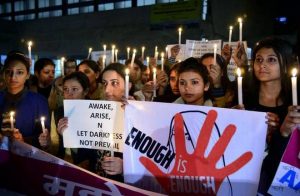
Where curriculum designers fear to tread, film directors take relaxed, bold strides. Few will consider ghosts and witchcraft as suitable topics for a textbook. Killing of women on the suspicion that they are practising witchcraft occasionally figures in the news. Such episodes may be on the decline, but witches and ghosts continue to shape the deeper layers of the collective social mind.
The power of ‘Stree’
The idea that women have secret powers which they are prone to using for evil purposes, including revenge, is common enough to make the recent film Stree successful at the box office. It deals with witchcraft in a comic mode without trivialising it. It frames witchcraft in a modern idiom, using it to throw light on gender disparity and injustice. It is a remarkable achievement in that it entertains without demeaning the subject as a sign of backwardness.
The core theme of Stree is the fear of women. Several men participate in the story, and they all come across as being scared of a woman who happens to be a ghost. This rare portrayal of male behaviour points towards the roots of misogyny. When secretly held fear is mixed with desire, it results in loathing. Fantasy of sexual conquest by brute force is often a logical product of this mixture of emotions.
A new social reality
Stree has come at a time when a sick ethos pervades many parts of India. This ethos is marked by the everydayness of rape. Over five years ago, after the so-named ‘Nirbhaya’ episode, criminal laws and procedures were revised, raising the hope of containing crimes against girls and women. That hope has receded even as rape has become routinised. Every morning, numerous incidents of rape are reported in newspapers. Many of these incidents involve young men getting together to rape a woman. The term ‘gang-rape’ is used for such incidents, the word ‘gang’ suggesting an organised, well-planned crime. This usage conceals the spontaneity and speed with which those who commit the crime came together when they spot a potential victim.
The idea of noticing an opportunity to rape together reflects an awful reality. The police can hardly cope with this kind of commonplace social reality. The new commonplace status of rape, including collective rape, as a crime that can occur anywhere, any time, is what distinguishes the current cultural landscape. Conquest over a woman forms the central theme of this cultural condition. Even if the victim is a child, the sense of conquest over her remains relevant to understanding the new male perspective.
Stree acquires its unique relevance from this larger, sinister milieu. It wraps the roots of misogyny in a ghost story. The story is located in Chanderi, the little town of Madhya Pradesh famous for its silk saris. A female ghost visits the population annually and abducts men, leaving their clothes behind. Inscriptions on doors asking the ghost to come ‘tomorrow’ and wearing women’s dress are among the tricks that the menfolk try for protection from the ghost. They are ultimately rescued when a young ladies’ tailor agrees to serve as a medium to confront the ghost. The woman who persuades and prepares him has studied witchcraft and aspires to gain the powers of the ghost.
Rich narrative
The narrative is rich with layers of meaning and possibilities of multiple interpretations. Its theme and message remain paradoxical but the intent is clear: to generate a discourse around the fear of women. That indeed is the heart of misogyny. The psychoanalyst, Sudhir Kakar, had indicated as much in his classic on childhood in India, The Inner World .
The core analysis Mr. Kakar offers in this book focusses on the upbringing of the male child. Psychoanalytic insight combined with an examination of myths and folklore demonstrates how sons end up, by the time they become adults, feeling hopelessly dependent on their mother who, at a deep layer locked in early childhood memories, frightens them. The son’s early experience also impairs his ability to relate to women as equals. Perceptions of women as a danger nourish the mythology of celibacy at one level and cultivate a general distrust of women at another.
Although Stree does not directly deal with violence against women, it gives plenty of clues about its origins. The language and lore of the world of young men come across as entertainment, but it also reveals how distant their constructions are from real girls and women. Belief in women’s evil powers drives the story to a satisfying end where the townsmen put up a statue with the inscription, ‘Protect us, O Stree’. Underneath this message lies the fear that the female ghost might continue if greater respect is not shown to women.
Disconnect in the classroom
Matters that this film manages to talk about cannot be imagined in a classroom at school or college. Educational institutions usually deal with gender issues in a textbook mode, preaching equality and mythologising modernity. In the typical ethos of a social science classroom, no engagement is possible with male attitudes towards women either. Nor can the terror internalised by girls at an early age be acknowledged and discussed. Lessons on gender disparity mention prejudices and stereotypes, but they seldom include the ones embedded in religious practices and festive rituals.
After a typical gender sensitivity workshop, everyone feels content and pleased. No attempt is made to examine why aggression and violence against women are increasing despite the growth of education.
While education has improved the distribution of eligibility and job opportunities for women, it has made little impact on male aggression and self-righteousness. The potential that education has for improving male sanity has been severely hampered by the unprecedented and easy access provided by digital devices to pornography, including child pornography. The situation is quite dire. A helpline was set up by the National Commission for Protection of Child Rights (NCPCR) as a facility for children who have been abused. It was inundated by callers looking for pornography. Apparently, the state apparatus has no immediate answers to offer for a social phenomenon growing at a wild pace.




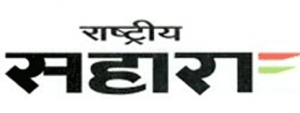 Date:07-10-18
Date:07-10-18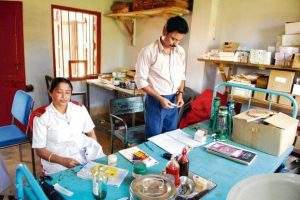
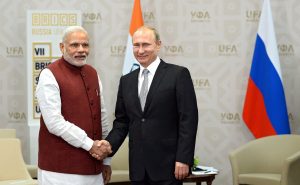



 Date:03-10-18
Date:03-10-18
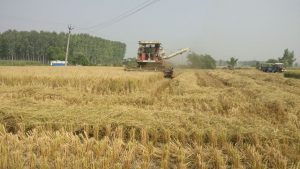
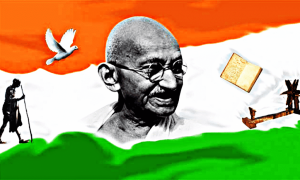





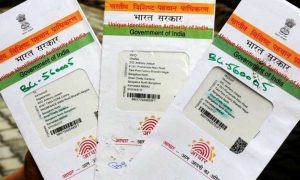
 The majority view of the five-member bench of the Supreme Court on Aadhaar is confusing and itself confused. The verdict pronounces Aadhaar constitutionally valid for state schemes, invalidates linking of bank accounts and phone connections to Aadhaar, retains linking of Aadhaar to the income-tax Permanent Account Number (PAN), tightens protection for personal data somewhat and removes the monopoly the Aadhaar Act gave the Unique Identity Authority in the matter of prosecuting anyone for Aadhaar misuse.
The majority view of the five-member bench of the Supreme Court on Aadhaar is confusing and itself confused. The verdict pronounces Aadhaar constitutionally valid for state schemes, invalidates linking of bank accounts and phone connections to Aadhaar, retains linking of Aadhaar to the income-tax Permanent Account Number (PAN), tightens protection for personal data somewhat and removes the monopoly the Aadhaar Act gave the Unique Identity Authority in the matter of prosecuting anyone for Aadhaar misuse.